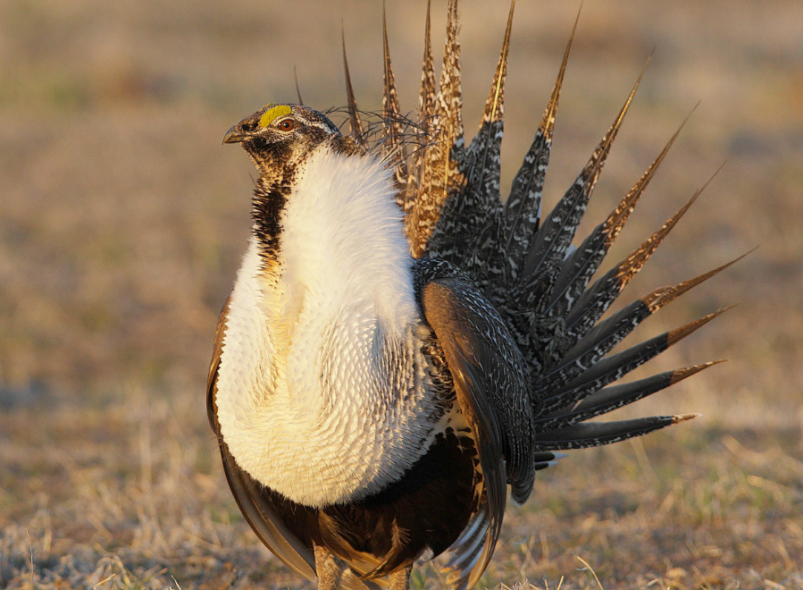BILLINGS, Mont. (AP) — A government study with significant implications for the U.S. energy industry says the breeding grounds of a struggling bird species need a 3-mile or larger buffer from oil and gas drilling, wind farms and solar projects.
That’s a much larger protective zone for the greater sage grouse than some states and federal agencies have adopted as the Obama administration weighs new protections for the bird.
The ground-dwelling bird ranges across 11 Western states. Its population dropped sharply in recent decades due to disease, pressure from the energy industry, wildfires and other factors.
Monday’s finding from the U.S. Geological Survey comes as state and federal officials scramble to come up with conservation measures to protect the grouse ahead of a court-ordered September 2015 decision on protections.
The USGS report represents a compilation of scientific studies aimed at seeing what it takes to protect the bird.
It was requested by the U.S. Department of Interior’s Bureau of Land Management, the federal agency that oversees millions of acres of sage grouse habitat and also regulates the energy industry across much of the West.
It said a buffer of at least a 3.1-mile radius around sage grouse breeding sites known as leks would provide considerable protections for the bird. That radius would equal a circle around the leks covering 30 square miles.
By comparison, Montana and Wyoming have adopted management plans for the bird that call for a buffer of six-tenths of a mile around leks in key sage grouse habitat. That’s an area of less than 4 square miles.
The USGS did not recommend specific management recommendations. But survey scientists said it should help the Interior Department as it crafts a conservation strategy for the birds.
Carol Schuler, USGS senior science adviser, said that land managers also need to take into consideration local conditions across the grouse’s sprawling, 257,000-square-mile habitat.
“The buffer distances in this report can be useful in developing conservation measures, but should be used in conjunction with conservation planning that considers other factors,” she said.
A related bird, the Gunnison sage grouse of Utah and Colorado, received federal protection as a threatened species on Nov. 12.
Copyright 2014 The Associated Press. All rights reserved. This material may not be published, broadcast, rewritten or redistributed.









